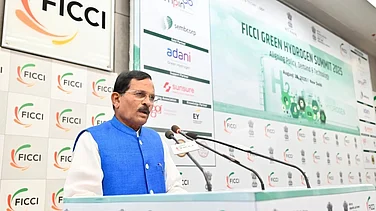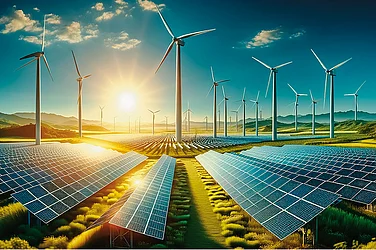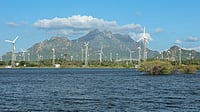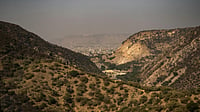The Greenland ice sheet, the second largest body of ice in the world, is cracking more rapidly than ever before in response to climate breakdown, revealed a study published in the journal Nature Geoscience on February 3.
Scientists led by Durham University, UK, studied more than 8,000 3-D surface maps, created using high-resolution satellite imagery. They found that crevasses had significantly increased in size and depth at the fast-flowing edges of the ice sheet over the five years between 2016 and 2021. This means that increases in crevasses are happening more quickly than previously detected. Crevasses are wedge-shaped fractures or cracks that open in glaciers where ice begins to flow faster.
How this Accelerates Climate Change Crisis?
According to Phys.org, crevasses are also getting bigger and deeper where ice is flowing more quickly due to climate change and that this could further speed up the mechanisms behind the loss of ice from Greenland.
Greenland has been behind approximately 14 mm of sea level rise since 1992, stated Durham University. This is due to increased melting from the ice surface in response to warmer air temperatures and increased flow of ice into the ocean in response to warmer ocean temperatures, which are both being driven by climate change.
Greenland contains enough ice to add 7 meters (23 feet) of sea level rise to the world's oceans if the entire ice sheet were to melt. Research has shown that Greenland could contribute up to 30 cm (one foot) to sea level rise by 2100.
The research found that, at the edges of the ice sheet where large glaciers meet the sea, accelerations in glacier flow speed were associated with significant increases in the volume of crevasses. This was up to 25% in some sectors (with an error margin of plus/minus 10%).
These increases were offset by a reduction in crevasses at Sermeq Kujalleq, the fastest-flowing glacier in Greenland, which underwent a temporary slowdown in movement during the study period.
This balanced the total change in crevasses across the entire ice sheet during the study period to plus 4.3% (with an error margin of plus/minus 5.9%). However, Sermeq Kujalleq's flow speed has since begun increasing again, suggesting that the period of balance between crevasse growth and closure on the ice sheet is now over.
Study co-author Professor Ian Howat, Director of the Byrd Polar & Climate Research Center at The Ohio State University, US, told phys.org that as crevasses grow, they feed the mechanisms that make the ice sheet's glaciers move faster, driving water and heat to the interior of the ice sheet and accelerating the calving of icebergs into the ocean.
These processes can in turn speed up ice flow and lead to the formation of more and deeper crevasses, a domino effect that could drive the loss of ice from Greenland at a faster pace.
The scientists hope their findings will allow scientists to build the effects of ice damage and crevassing into predictions of the future behaviour of the Greenland Ice Sheet.






























